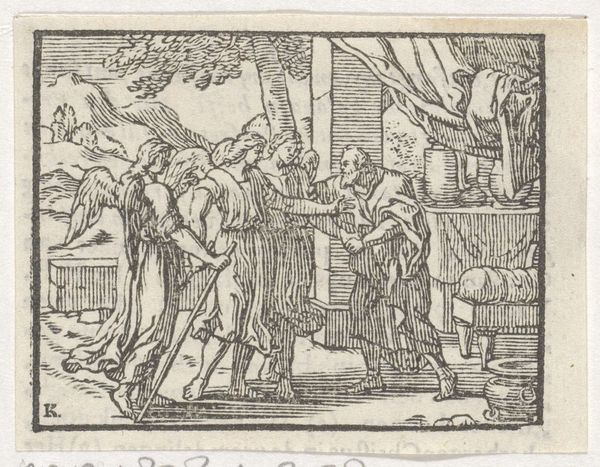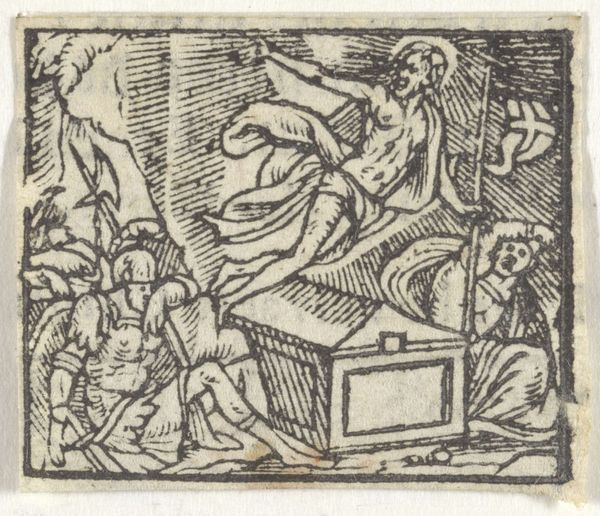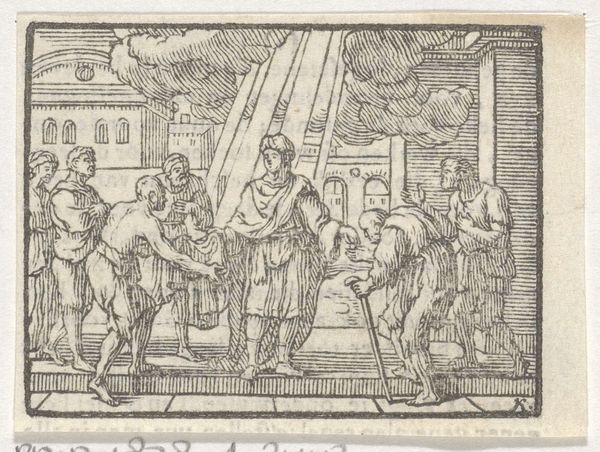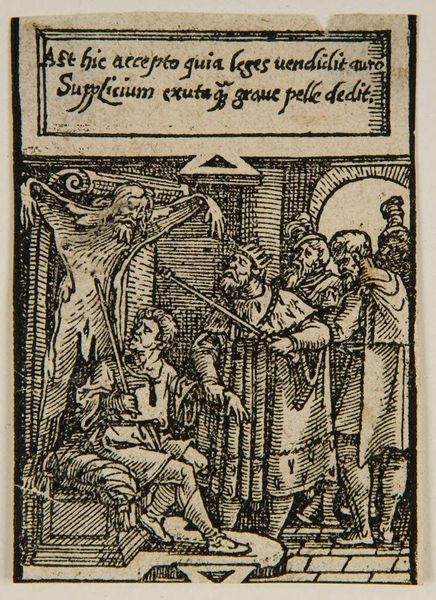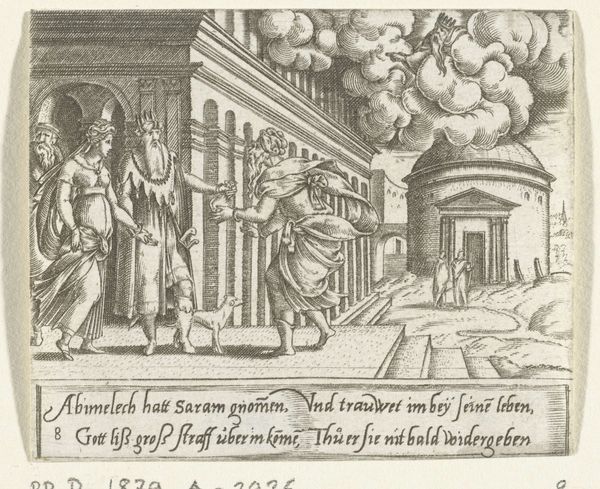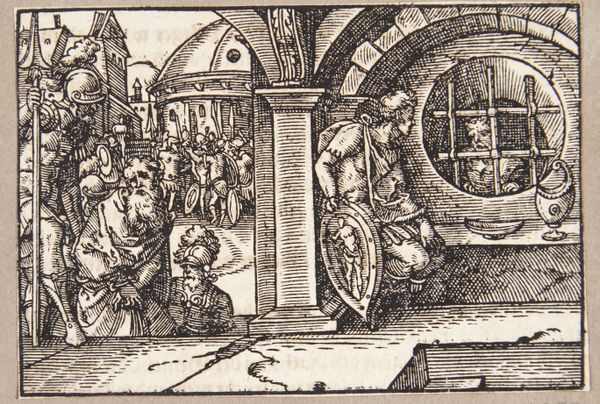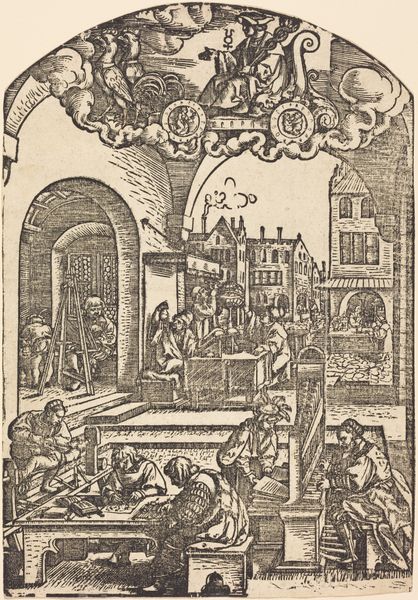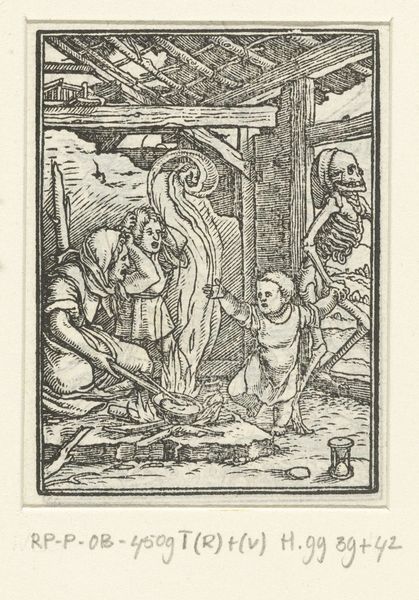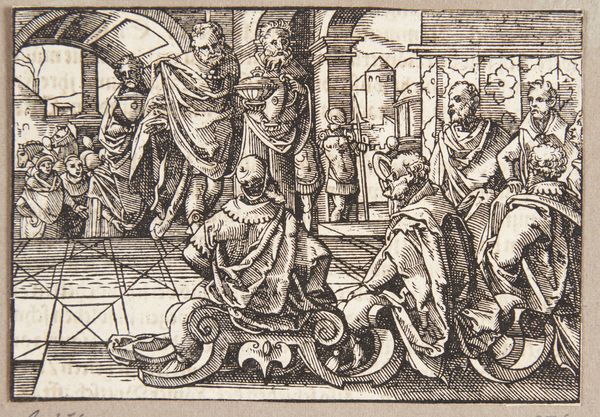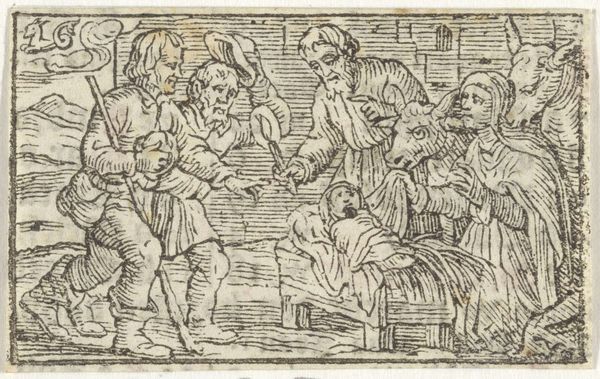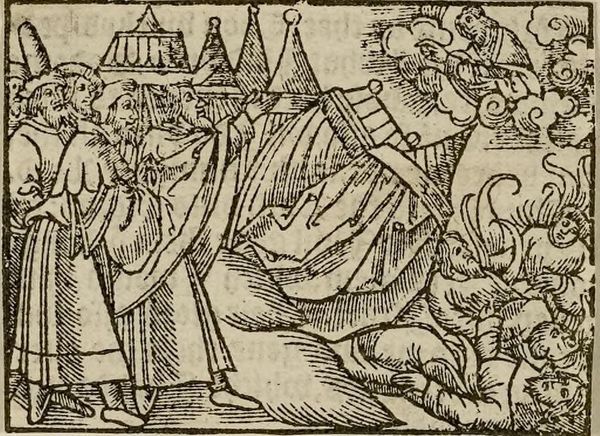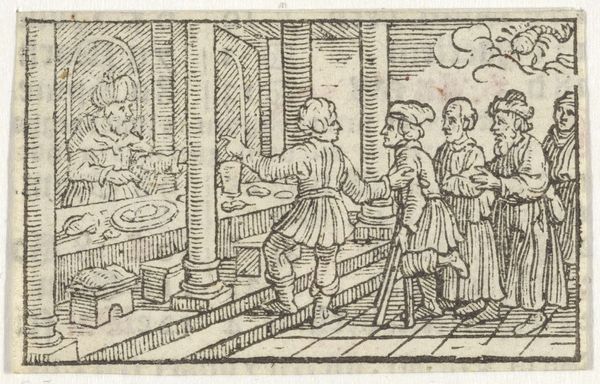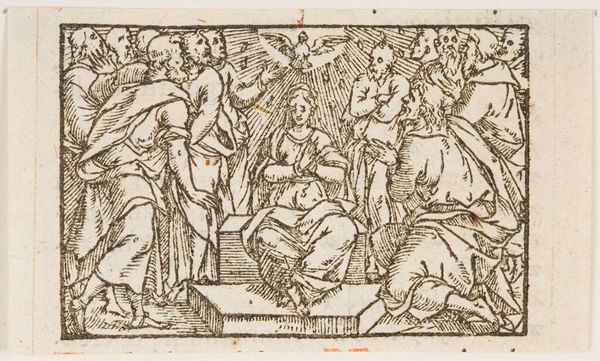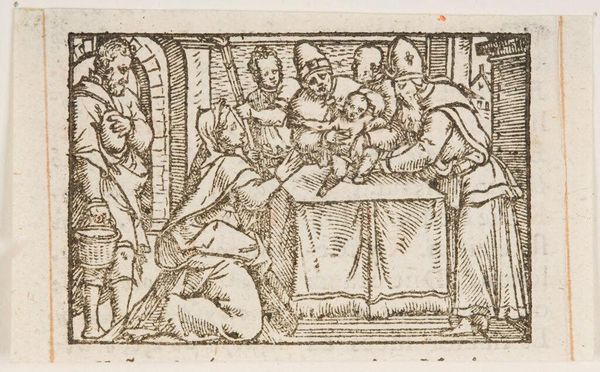
print, woodcut, engraving
#
medieval
#
narrative-art
# print
#
pen illustration
#
old engraving style
#
landscape
#
figuration
#
woodcut
#
line
#
genre-painting
#
engraving
Dimensions: height 46 mm, width 79 mm
Copyright: Rijks Museum: Open Domain
Curator: Look closely at this engraving, a 17th-century woodcut titled "Oktober". Doesn't it whisper secrets of a world utterly different from our own? Editor: Oh, it does more than whisper, it shouts! Immediately, I'm struck by the graphic intensity of the line work. You can almost feel the pressure of the tool carving away at the woodblock. But tell me, what exactly are we looking at? Curator: A scene unfolds before us: men attending to an ailing figure center stage. The details are remarkably vibrant, like tiny universes contained within those deliberate cuts. There's a king observing, a grand hall hinted at in the background, a landscape fading in the distance... It’s like a stage set, really. Editor: It's the act of depiction itself I find fascinating. Consider the material conditions of its creation: the price of wood, the accessibility of printmaking tools, the hands that made and distributed it... What sort of labour underpinned this image? Who was it made for? It looks so brutal and clinical, but it is fascinating Curator: And I find myself drawn into that stark contrast: the raw brutality offset by the meticulous technique. It's strange to think that from this act of pain emerges a piece of art, immortalizing both the suffering and the artistry. Art made manifest in labor, literally. Editor: The materiality isn't simply a passive support, but actively informs the image's meaning. You know what I mean, the grain of the wood influencing the flow of lines, the limitations of the carving tool dictating the level of detail, creating this interplay between the subject depicted and means of its representation. Curator: Exactly! Each choice, from the type of wood to the pressure of the tool, speaks to the world in which it was conceived. To know the artist is an anonymous is frustrating as much as is intruguing... it enhances the universal idea behind the print: art without the artist, but plenty of hands working on it, still, it sings from a distant autumn long gone. Editor: It is still resonating in our days. From the hand-cut precision of its creation to the very paper it's printed on, the object offers a portal into the values and economics of its time, even now in our digital era.
Comments
No comments
Be the first to comment and join the conversation on the ultimate creative platform.
